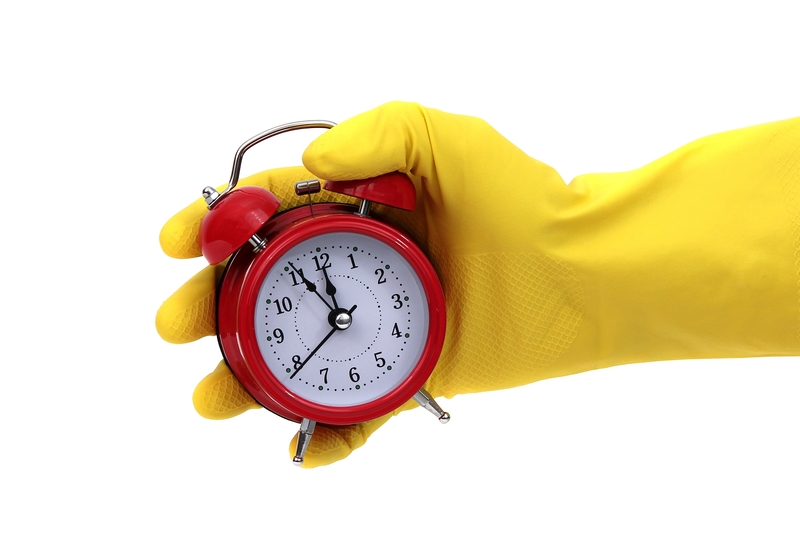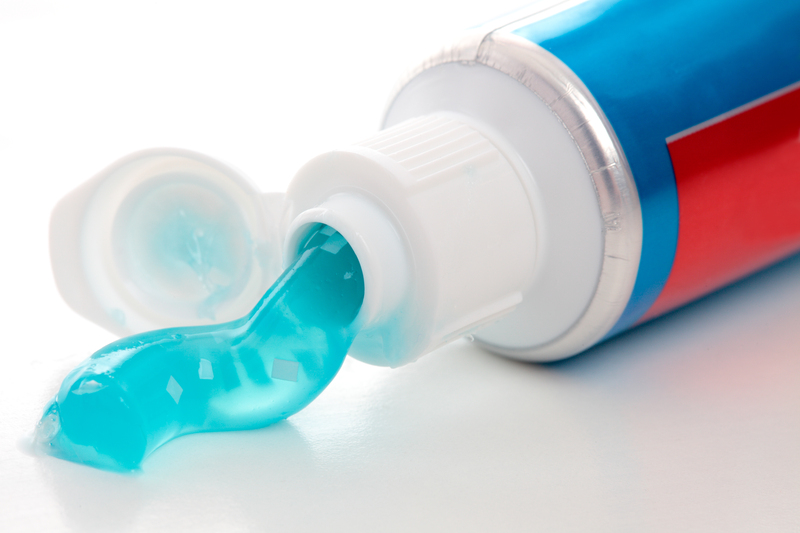Purify Your Living Space from Damp Scents
Posted on 18/09/2025
Purify Your Living Space from Damp Scents: A Complete Guide
Damp, musty odors can quickly turn your cozy home into an uncomfortable environment, affecting not only your comfort but also your health. If you want to purify your living space from damp scents and enjoy fresh, clean air, this comprehensive article will walk you through practical steps to eliminate musty smells and prevent their return. Read on for proven tips, expert advice, and effective solutions to banish damp odors for good.

What Causes Damp Scents in a Home?
Before you can truly neutralize damp odors in your house, it's important to understand where they originate. Damp scents are typically the result of excess moisture in indoor spaces. Here are some common causes:
- Poor Ventilation: Not enough airflow lets humidity collect, encouraging the growth of mold and mildew.
- Water Leaks: Leaky roofs, windows, or plumbing can saturate walls, ceilings, or floors, resulting in a persistent musty odor.
- Condensation: Cold surfaces cause indoor moisture to condense, especially in poorly insulated homes or cold rooms like basements.
- Mold & Mildew Growth: These fungi thrive in moist, dark environments and produce the classic "damp" aroma.
- Flood Damage: Past flooding events may leave underlying dampness that can linger for months or even years.
Understanding these sources gives you the power to eliminate musty scents at the root.
The Health Risks of Ignoring Damp Smells
You may think a musty smell is just unpleasant, but it can be a warning sign of bigger health hazards:
- Respiratory Issues: Mold spores and mildew can worsen asthma, allergies, and other respiratory conditions.
- Headaches & Fatigue: Poor air quality can lead to headaches, persistent fatigue, and cognitive difficulties.
- Structural Damage: Continued dampness can weaken walls, flooring, and furnishings, leading to costly repairs.
Purifying your living space isn't just about comfort--it's about creating a healthy, safe environment for you and your loved ones.
Identify the Source of Damp Odors
To remove musty aromas from your home, always start with a thorough inspection. Pay attention to areas most affected by moisture:
- Basements and crawl spaces
- Bathrooms, laundry rooms, and kitchens
- Window frames, corners, and under sinks
- Behind furniture, inside closets, and under carpets
Look for visible signs of mold, mildew, staining, or damp patches. The use of a moisture meter can help determine which walls or floors harbor excess moisture.
Quick-Action Steps to Purify Air from Damp Scents
-
Increase Ventilation
- Open windows and doors every day to flush out stale air.
- Use exhaust fans in bathrooms and kitchens to remove moisture.
- Position fans strategically to circulate air through affected rooms.
-
Deploy Dehumidifiers
- Lowering the indoor humidity to 40-60% makes the environment inhospitable for mold and musty smells.
- For severely damp spaces, consider large-capacity models or rental-grade units.
-
Absorb Odors with Natural Remedies
- Baking soda: Place bowls of baking soda to absorb musty odors.
- Activated charcoal: These odor absorbers are especially effective in closets and enclosed spaces.
- White vinegar: A bowl of vinegar will neutralize persistent scents.
-
Deep Clean Surfaces
- Scrub affected areas with a solution of vinegar, hydrogen peroxide, or a specialized mold remover.
- Launder all fabrics, curtains, and upholstery to eliminate trapped odors.
-
Dispose of Contaminated Materials
- If carpeting, drywall, or insulation is badly affected, it's safest to remove and replace those materials.
Long-Term Solutions to Prevent Damp Smells
It's not enough to simply mask odors or do a one-time clean. To purify your living space from persistent damp scents, follow these enduring strategies:
1. Address Structural Moisture Issues
- Fix leaky plumbing, windows, roofs, and gutters promptly.
- Invest in proper insulation of basement walls and crawl spaces.
- Grade landscaping away from the house so rainwater drains properly.
2. Maintain a Dry Environment
- Use a hygrometer to monitor indoor humidity consistently.
- Ensure that dryers and bathroom vents exhaust to the outdoors, not into the home.
- Air out damp areas regularly, especially after storms or laundry days.
3. Regular Cleaning and Upkeep
- Vacuum carpets and floors frequently using a HEPA filter vacuum.
- Wash bedding, linens, and curtains at least monthly.
- Don't allow wet items to linger indoors--dry them outdoors or with a tumble dryer.
4. Use Air Purifiers
- High-quality HEPA air purifiers can help remove airborne mold spores, dust, and odors.
- Run them in affected areas, especially bedrooms and basements.
5. Treat and Seal Surfaces
- Seal concrete or brick with appropriate waterproofing treatments.
- Repaint walls with mold-resistant paints in high-moisture areas such as bathrooms and kitchens.
Natural Remedies for Freshening Indoor Air
If you prefer a non-chemical approach to removing damp smells, try these natural alternatives:
- Essential Oils: Diffuse oils like tea tree, eucalyptus, or lavender for antimicrobial and deodorizing effects.
- Lemon Peels & Herbs: Simmer lemon peels or fresh rosemary in water to naturally fragrance your home.
- Houseplants: Certain plants, like peace lilies, ferns, or spider plants, can absorb humidity and purify air.
Professional Solutions for Severe Cases
Sometimes, despite your best efforts, damp odors persist. When the problem goes deeper--such as behind walls or under flooring--it's time to call in the experts. Professional remediation may involve:
- Mold inspection and remediation: Specialists use advanced equipment to detect, contain, and remove mold growth.
- Waterproofing services: These might include interior or exterior sealing, sump pump installation, or drainage improvements.
- Ozone treatments: Effective for removing stubborn odors that linger even after cleaning.
While more expensive, these measures offer a permanent solution to purifying your living space from deeply embedded damp scents and the health hazards that accompany them.
Frequently Asked Questions
How Long Does It Take to Eliminate Musty Odors?
Light musty scents can often be removed within a day or two using ventilation, baking soda, or dehumidifiers. However, more persistent odors--especially those caused by structural moisture or hidden mold--may take a week or longer and require multiple treatments.
Are Air Fresheners Effective for Damp Smells?
No. Air fresheners only mask the scent temporarily. To truly purify your living space from musty aromas, you must remove the source of moisture and treat surfaces as described above.
How Can I Prevent My Home From Smelling Damp in the Future?
- Keep humidity below 60%.
- Inspect for leaks regularly.
- Clean and air out vulnerable areas routinely.
- Use moisture barriers and waterproof paints where appropriate.
Can Damp Odors Cause Health Problems?
Yes. Prolonged exposure to mold and mildew can exacerbate allergies, trigger asthma, and lead to other respiratory issues, particularly in children and seniors. Immediate action to eliminate damp scents in your living space is always recommended.

The Final Checklist: A Fresh, Inviting Living Space Awaits
Ready to enjoy a fresher, healthier home? Here's a short checklist for effective home damp scent removal:
- Identify and fix sources of excess moisture
- Ventilate daily and use dehumidifiers
- Absorb odors naturally with baking soda or activated charcoal
- Deep clean all affected surfaces and fabrics
- Use mold-resistant paints and sealants
- Maintain low humidity and inspect regularly
- Enlist professional help for persistent or severe problems
By adopting these strategies, you can purify your living space from damp scents and breathe cleaner, fresher air every day. Tackle the issue at its source, follow through on prevention, and reclaim the comfort and health of your home environment--because every family deserves to live in a clean and odor-free space.
Conclusion: Create a Home That Smells as Good as It Feels
Don't let musty, damp odors rob you and your loved ones of a safe, inviting home. Tackling the problem promptly, taking practical steps to eliminate moisture, and adopting long-term preventative measures will ensure you always return to a welcoming space. If you found this guide helpful, share it and help others learn to purify their living space from unwelcome damp scents--because fresh living is happy living!




